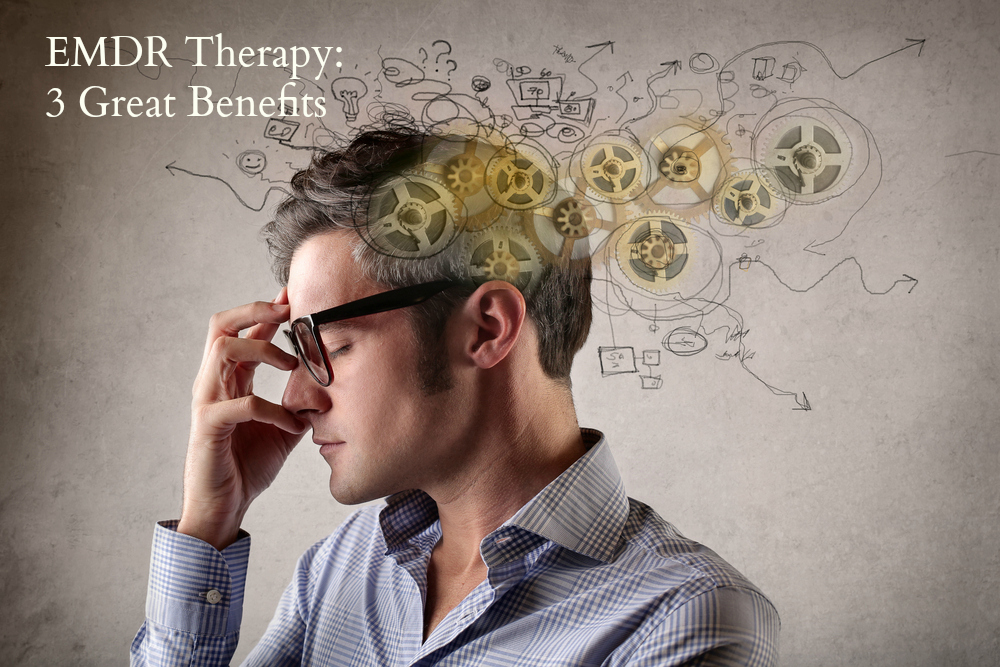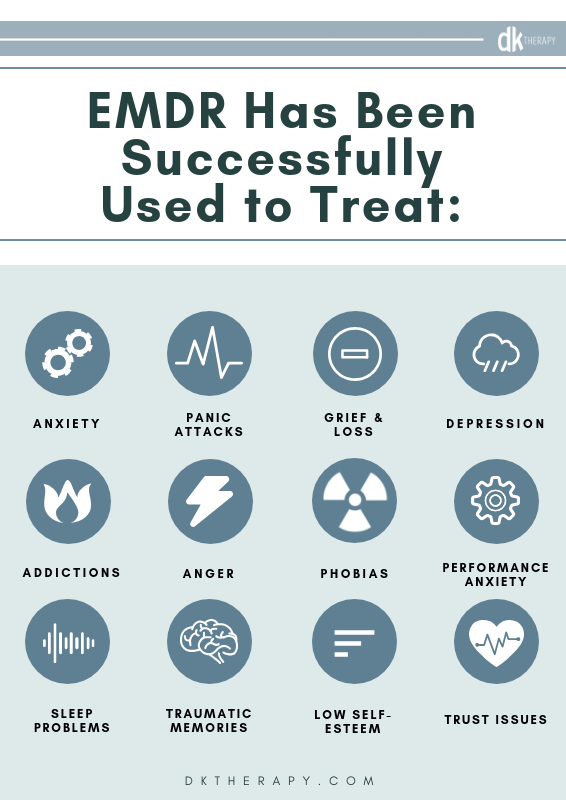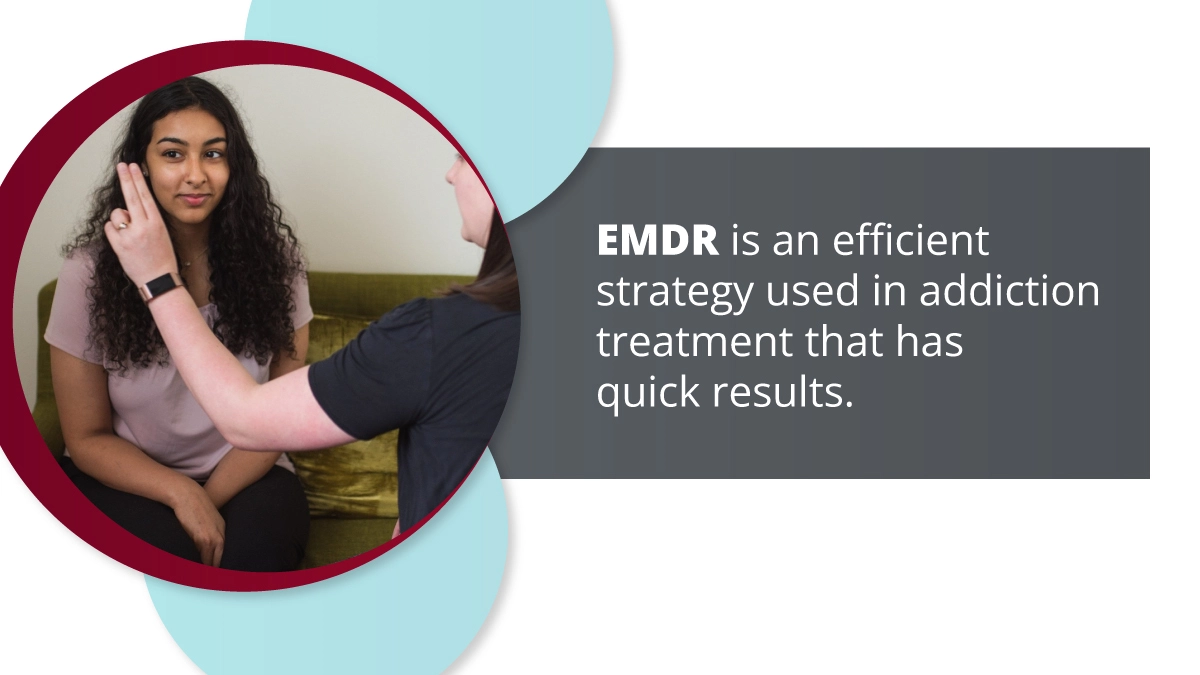How emdr therapy new york city treats mental health challenges with systematic methods
Exactly How EMDR Therapy Works: a Detailed Look at the Refine and Its Effectiveness
EMDR therapy has become a noticeable therapy for trauma-related disorders. Its structured approach includes different phases designed to facilitate the handling of stressful memories. Central to this technique is the concept of reciprocal stimulation, which plays a necessary function in how memories are refined. Comprehending these elements discloses much concerning the therapy's effectiveness. Nonetheless, what especially occurs throughout an EMDR session, and exactly how does it influence the restorative journey?
Understanding the Concepts of EMDR Therapy
EMDR treatment, or Eye Motion Desensitization and Reprocessing, operates the facility that unresolved stressful experiences can impede psychological well-being. This cutting-edge restorative approach intends to help with the handling of stressful memories, allowing people to get a much healthier point of view on their past. Central to EMDR is the principle of bilateral stimulation, usually attained through assisted eye movements, which is believed to assist incorporate terrible memories right into a much more flexible structure.

The Eight Phases of EMDR Therapy
The procedure of EMDR therapy unfolds over 8 distinctive phases, each developed to direct clients via an organized method to healing injury. The initial phase entails history-taking, where the therapist examines the customer's background and determines target memories. In the 2nd stage, clients learn leisure methods to handle distress. The third phase concentrates on recognizing unfavorable beliefs connected with the stressful memory.
The fourth phase is where the desensitization procedure begins, permitting clients to process the distressing memory. The fifth stage includes installing favorable beliefs to change the negative ones. In the 6th phase, customers are directed to assess their physical and emotional responses to the processed memory. The 7th stage emphasizes closure, assisting clients go back to a state of equilibrium. The eighth stage involves reevaluation, where therapists and customers assess progression and attend to any residual distress. This complete technique promotes a pathway to healing and durability.
The Function of Reciprocal Excitement
Reciprocal stimulation is a necessary component of EMDR therapy, promoting the processing of distressing memories. This strategy involves alternating stimulation of both hemispheres of the mind, generally accomplished via eye activities, auditory tones, or tactile sensations. The function of reciprocal excitement is to involve the mind's natural information processing system, which might come to be disrupted adhering to injury.
By turning on both sides of the mind, bilateral stimulation assists customers accessibility and reprocess upsetting memories in a much more flexible means. This approach encourages the integration of distressing experiences, lowering their emotional fee and allowing clients to establish new point of views.

Furthermore, reciprocal stimulation might advertise leisure and minimize stress and anxiety during sessions, developing a more secure atmosphere for clients to challenge painful memories. Ultimately, this approach improves the restorative process, permitting people to move toward recovery and resolution.
Evidence Sustaining the Effectiveness of EMDR
Research study has revealed that EMDR therapy is effective in dealing with various emotional conditions, particularly post-traumatic stress and anxiety condition (PTSD) Numerous researches have shown considerable decreases in PTSD signs adhering to EMDR treatment. try here For circumstances, a meta-analysis of randomized controlled tests discovered that EMDR was as reliable as cognitive behavioral treatment (CBT) for PTSD, with long lasting results observed even months after therapy. Furthermore, the American Psychological Organization and the World Health and wellness Organization back EMDR as an advised treatment for trauma-related conditions.
Beyond PTSD, study indicates that EMDR can likewise profit individuals struggling with anxiousness, clinical depression, and anxieties. An expanding body of evidence supports its use in varied populaces, including kids and experts - best emdr therapy in nyc. In general, the gathering research highlights EMDR's prospective as a functional therapeutic option, leading the way for more expedition right into its mechanisms and applications in mental health and wellness treatment
What to Anticipate Throughout an EMDR Session
During an EMDR session, clients can expect a structured yet versatile technique focused on handling stressful memories. The specialist starts by developing a secure setting, where customers can really feel comfy sharing their experiences. First conversations concentrate on recognizing details memories and associated negative ideas.
Customers are led to concentrate on these memories while simultaneously engaging in reciprocal excitement, typically with assisted eye activities or touching. This twin focus aims to help with the processing of the injury, permitting customers to reframe their experiences and minimize emotional distress.
Throughout the session, specialists monitor customers' feedbacks, readjusting the speed and method as needed. Procedure might include relaxation strategies or cognitive restructuring to strengthen positive ideas. On the whole, customers can anticipate a supportive ambience that motivates self-exploration and healing, ultimately bring about a higher feeling of psychological wellness.
Frequently Asked Inquiries
Is EMDR Treatment Suitable for Kid or Adolescents?
EMDR therapy can check these guys out be suitable for teens and kids, offered it is adjusted to their developmental demands (emdr therapy). Medical professionals commonly modify strategies to ensure safety and security and efficiency, supporting more youthful populaces in handling injury and emotional distress
How Much Time Does EMDR Therapy Generally Last?
EMDR treatment usually lasts in between 8 to 12 sessions, with each session ranging from 60 to 90 mins. Nevertheless, specific needs and the intricacy like it of trauma can affect the total duration of treatment.
Can EMDR Treatment Be Done From Another Location or Online?
EMDR treatment can without a doubt be performed from another location or online. Numerous specialists have actually adapted their methods to online atmospheres, allowing clients to take part in efficient sessions from the convenience of their homes, preserving restorative advantages.
What Are the Possible Adverse Effects of EMDR?
Possible side results of EMDR treatment might consist of short-lived psychological distress, enhanced anxiousness, brilliant memories, and physical pain. People may likewise experience tiredness or migraines following sessions, as the mind processes intense sensations and memories.
Just How Does EMDR Contrast to Standard Talk Therapy?

EMDR treatment, or Eye Activity Desensitization and Reprocessing, runs on the facility that unsolved stressful experiences can impede emotional health. The process of EMDR therapy unravels over eight distinct stages, each designed to lead clients via an organized technique to recovery injury. Reciprocal stimulation is an important component of EMDR therapy, facilitating the handling of terrible memories. Throughout an EMDR session, clients can anticipate a structured yet versatile approach intended at handling terrible memories. Possible side effects of EMDR treatment might include short-lived psychological distress, increased anxiousness, vivid memories, and physical pain.